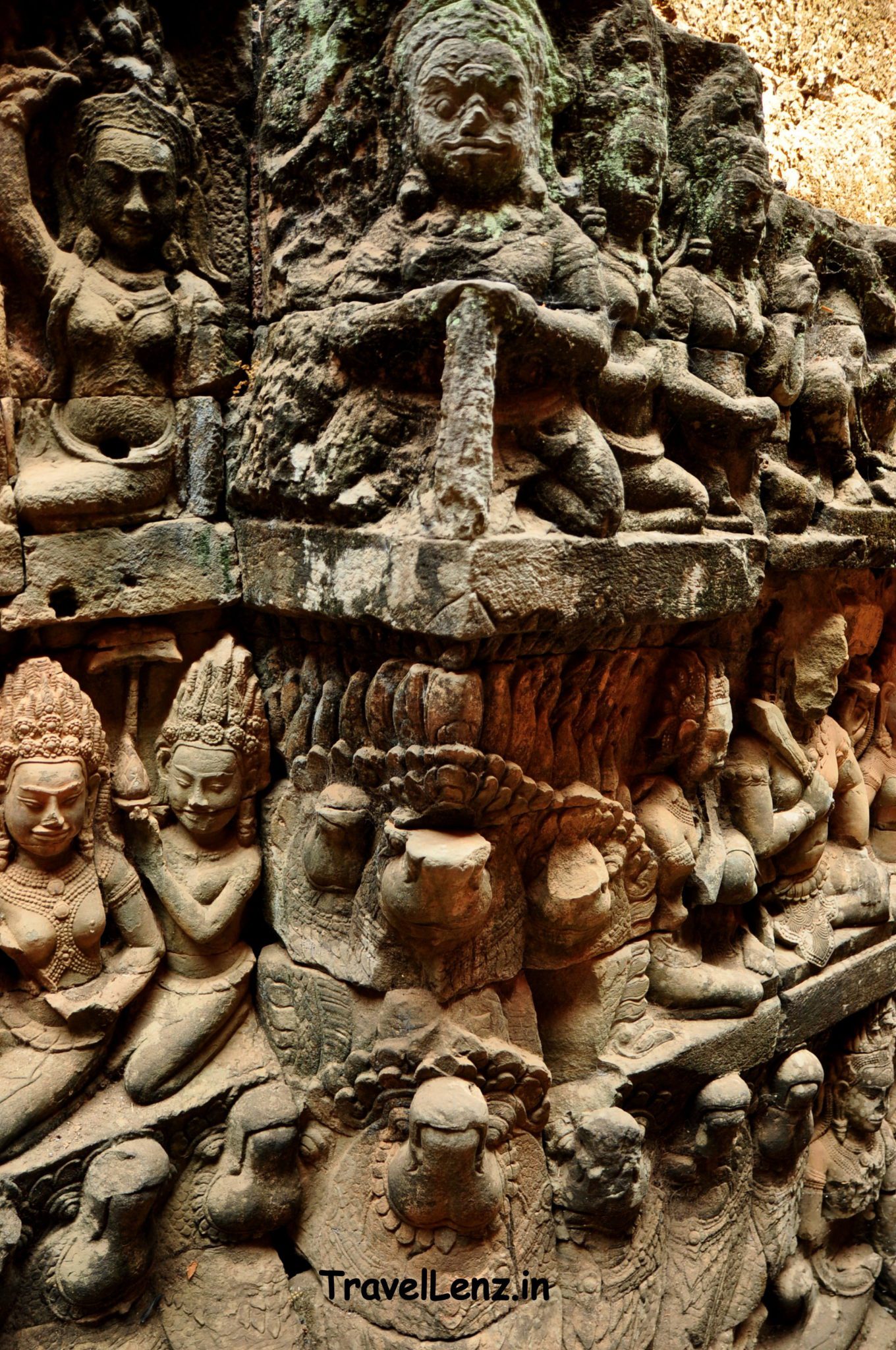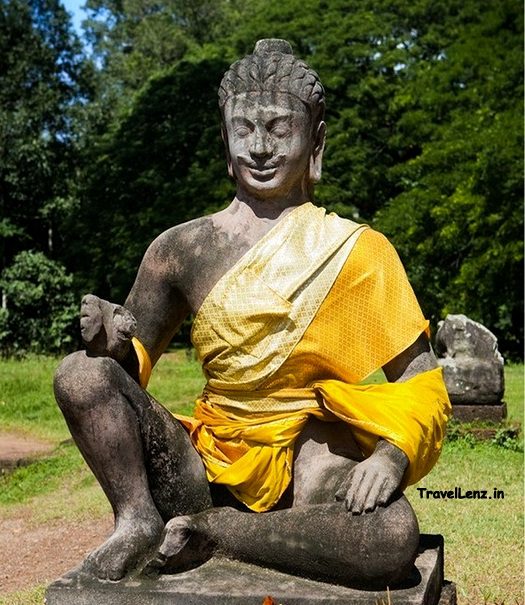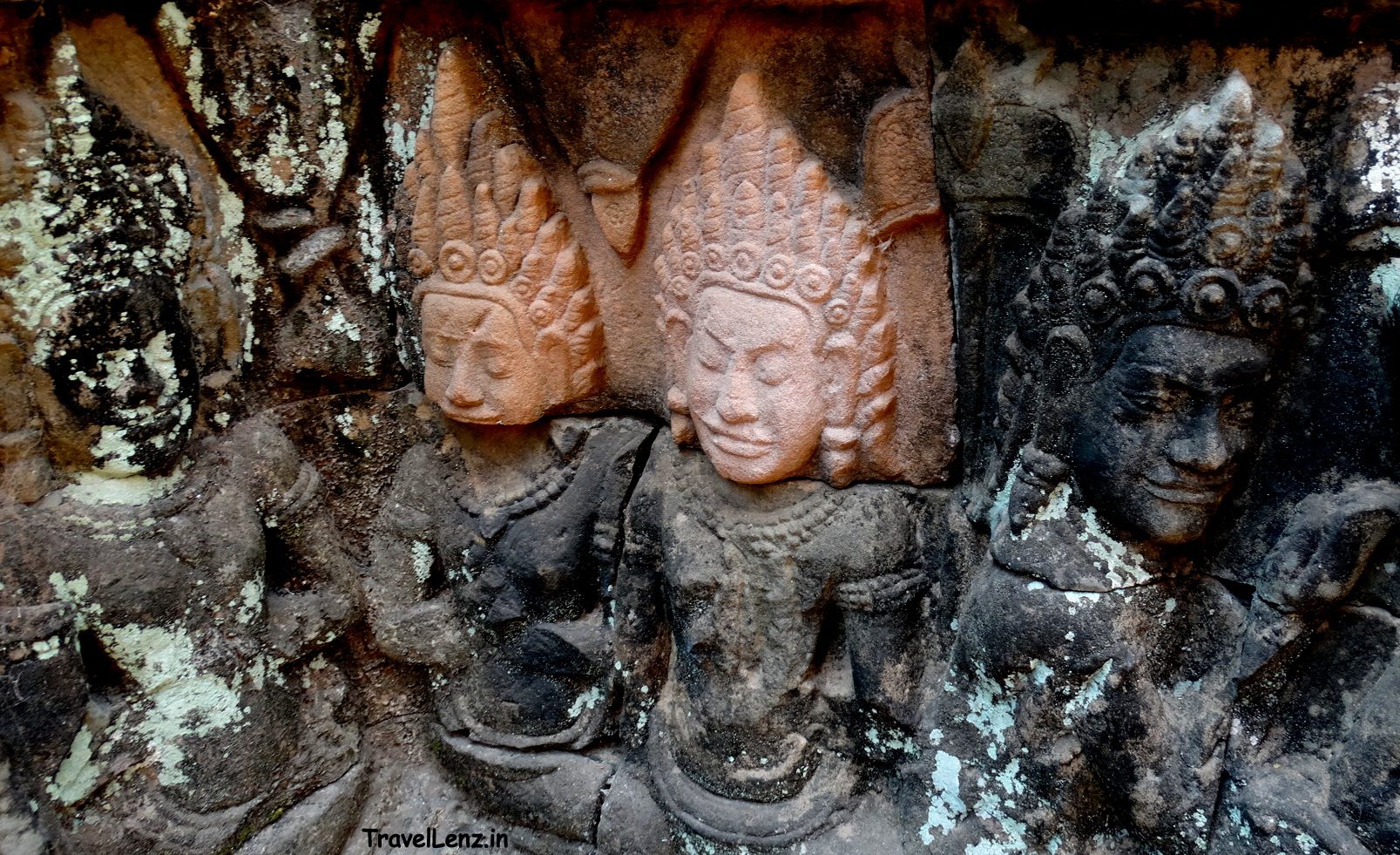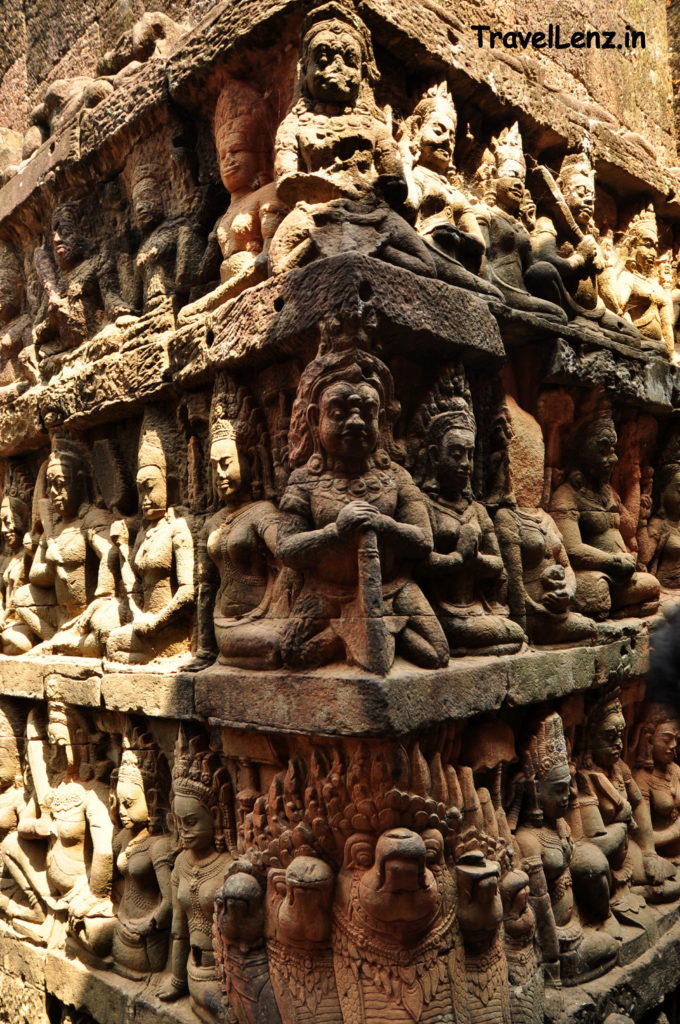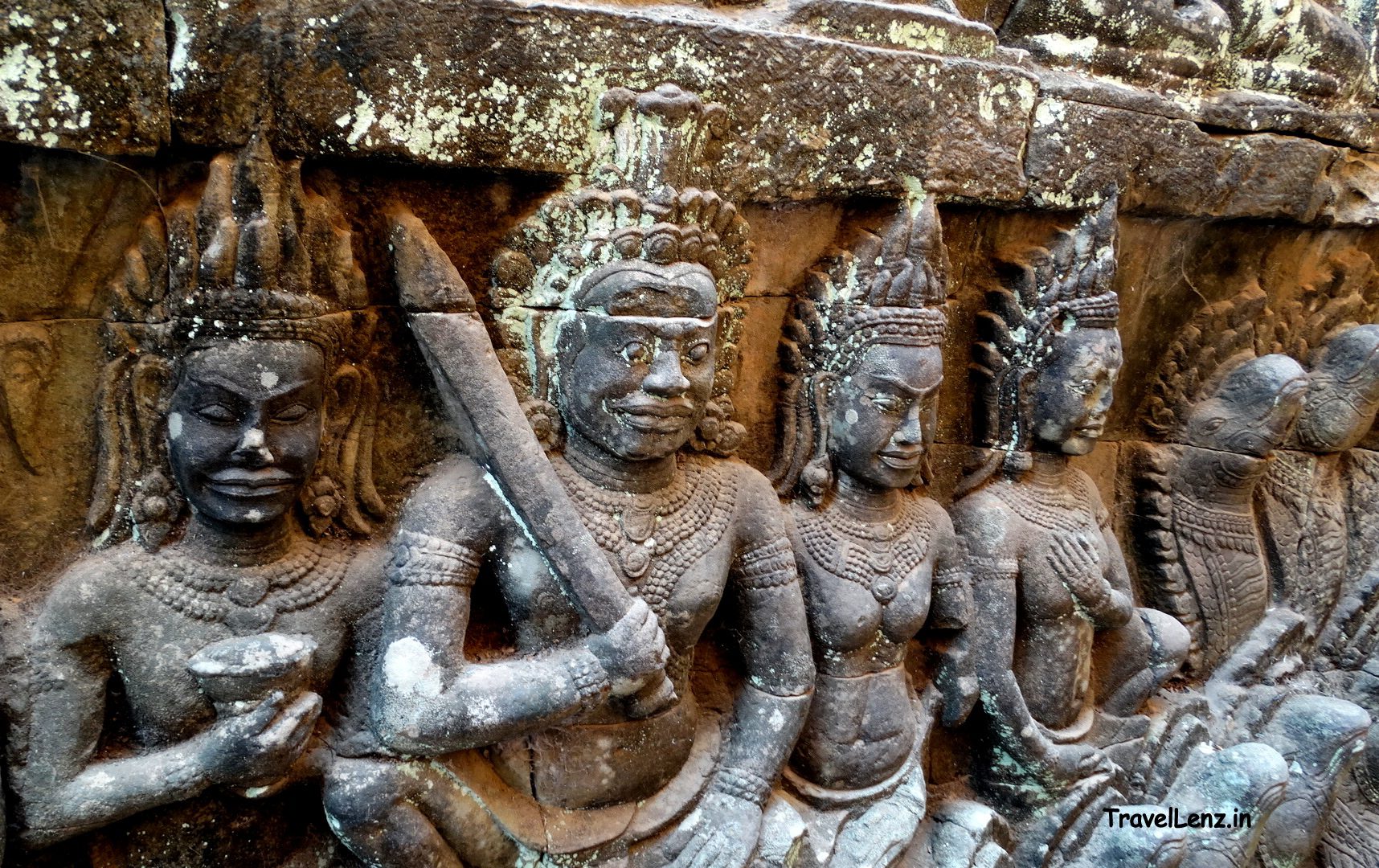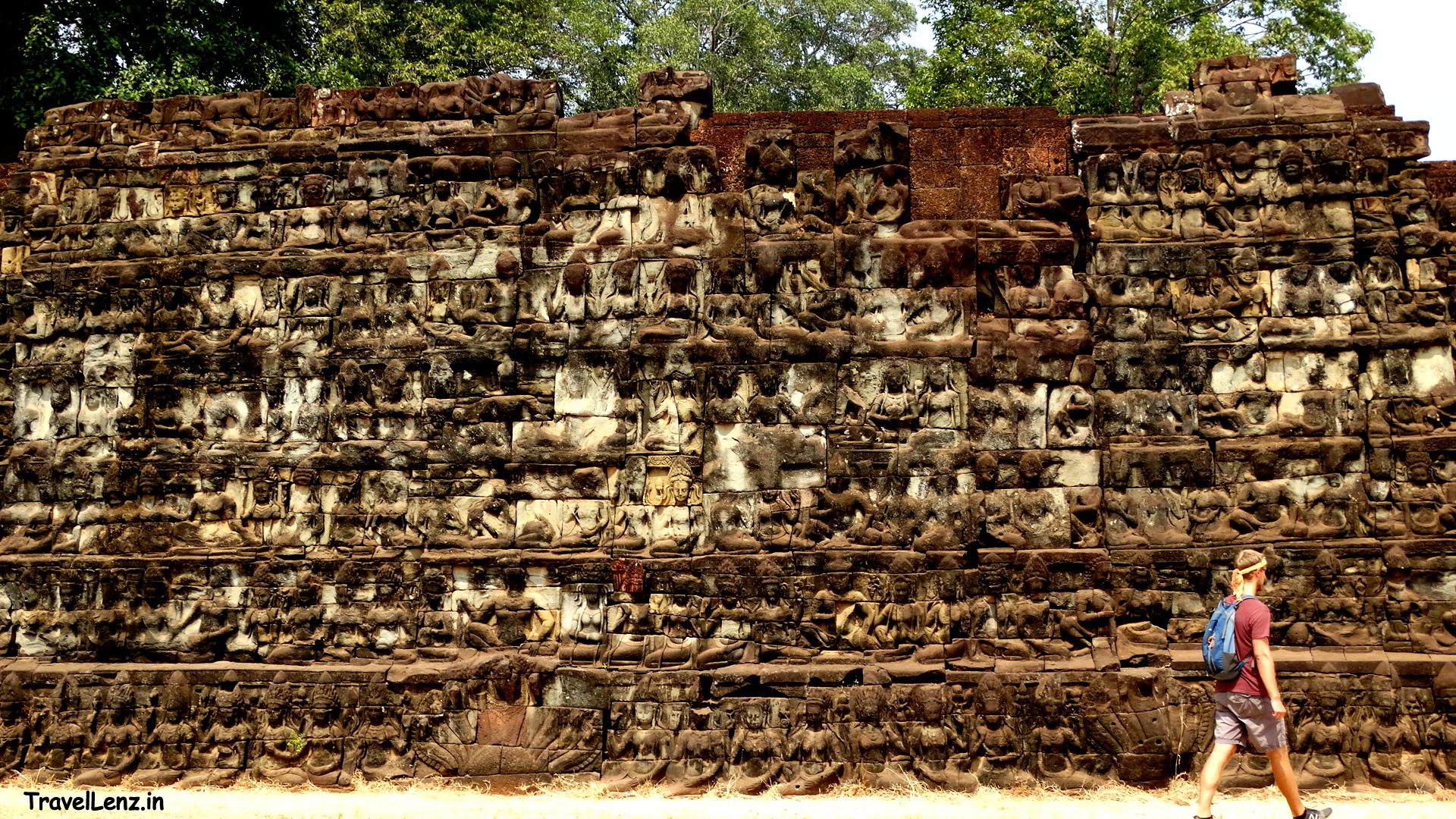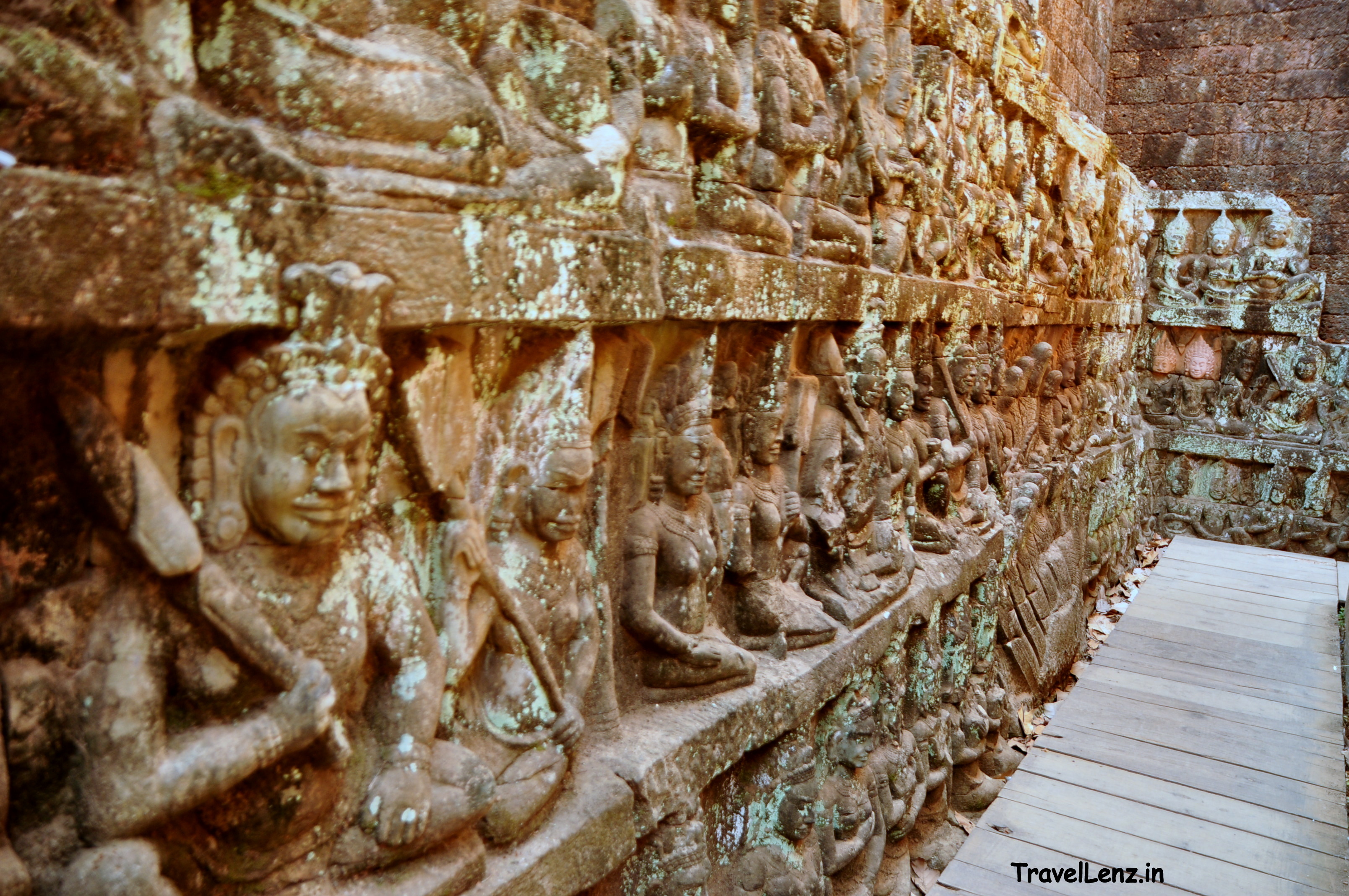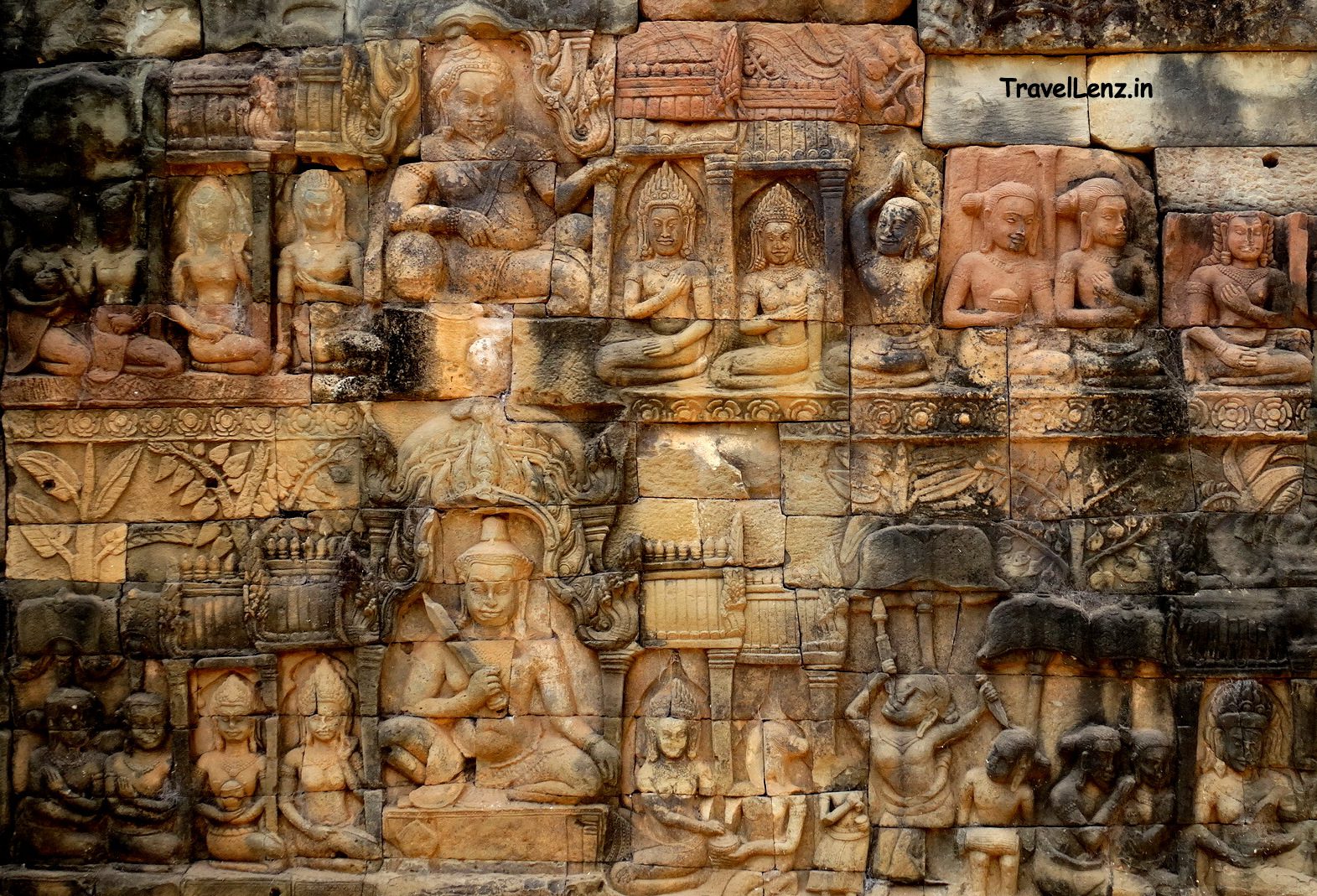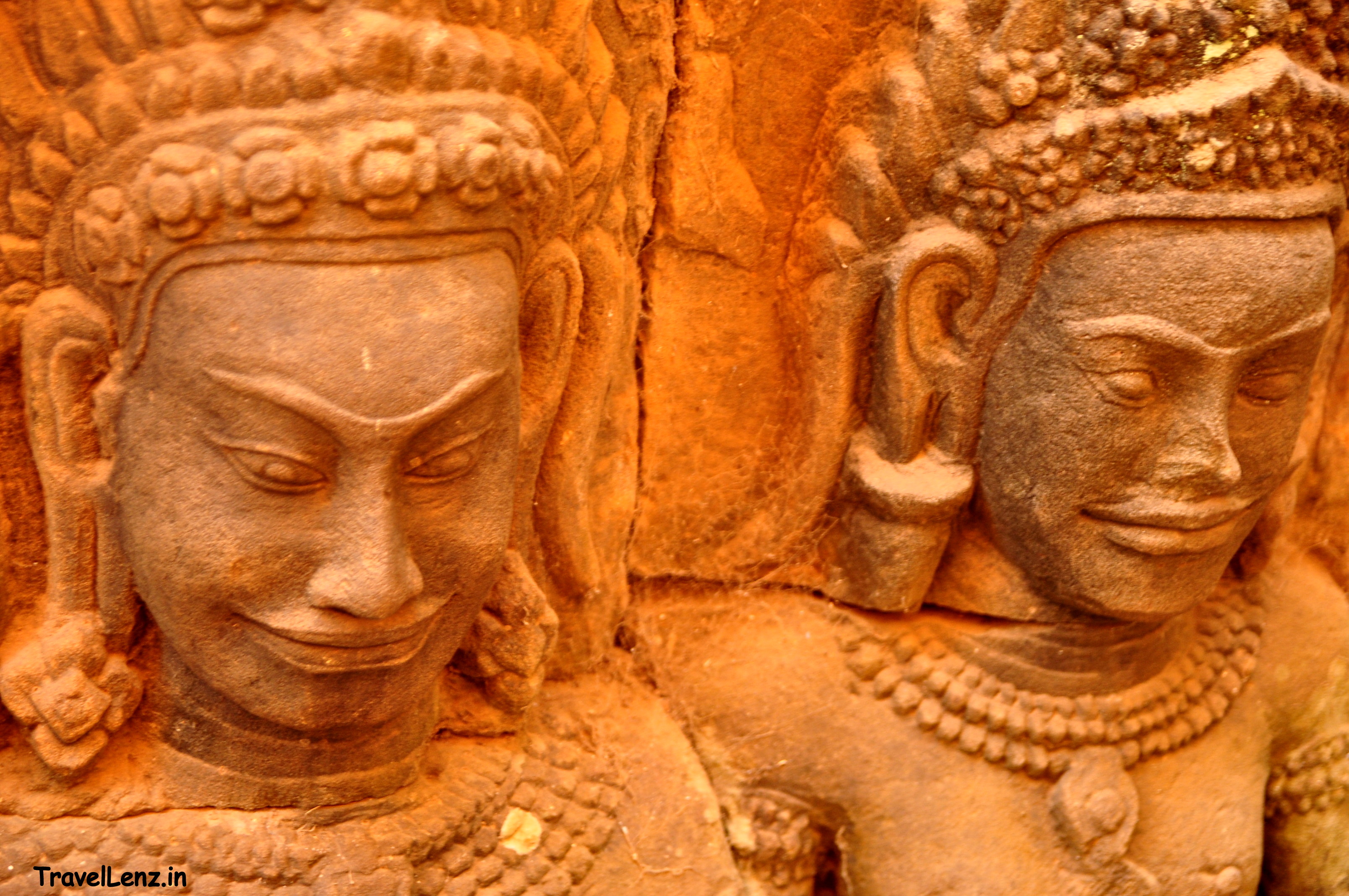Last Updated on May 20, 2021
With a yellow coloured robe covering his modesty, we found a statue of Lord Yama kneeling on a platform with his forearm supported by his right knee. Flowers were kept at his feet and incense sticks burned reverently. In Angkor, he is known as the Leper King, and his platform, located at the northern end of the Terrace of Elephants is known as the Terrace of the Leper King.
The Terrace of the Leper King was another intriguing name that came up as we did our research on the Angkor sites.
The statue we saw on the terrace is a replica and the original statue now ‘sits’ in the National Museum in Phnom Penh.
Who was the Leper King?
There are two theories about the Leper King – one is that the statue is of an Indian Prince who came to Cambodia to marry the daughter of the Naga King and found the city of Angkor. The second theory is that the statue represents Lord Yama, the Hindu god of death.
The statue is carved as a nude and without sexual organs.
But why was he known as the Leper King?
The association of this statue with leprosy may have happened as a result of the statue’s dilapidated appearance or its lichen-covered face and body and missing fingers and toes.
The Terrace of the Leper King – The outer and inner worlds
The terrace had two walls, an inner hidden wall, and an outer wall, with a narrow passage between them. Both the sets of walls were constructed of sandstone and were arranged horizontally into six or seven tiers of sculptures, though the uppermost tier was mostly eroded.
There were long rows of carved figures that mainly consisted of multi-headed Nagas, marine creatures, Garudas, and female celestial beings decorating the walls. We also found carvings of that of a sword swallower and Lord Shiva holding a trident.
The hidden wall sculptures were better preserved – we found seated male figures with drawn swords with attendees on both sides. A narrow wooden board is placed along the narrow passageway with high walls on either side.
It seemed as if we were walking along a secret passage that took us to an underworld. And you’ll catch some vivid expressions on some of the faces – some smiling, some smirking and some menacing.


